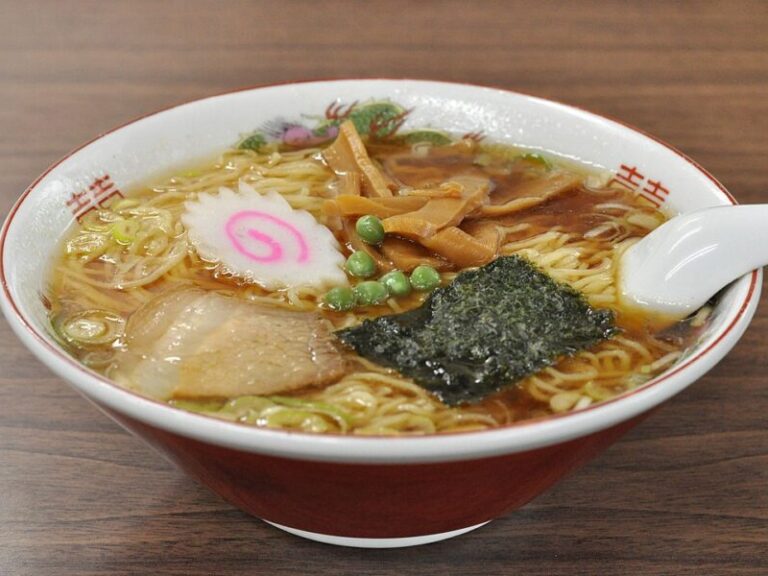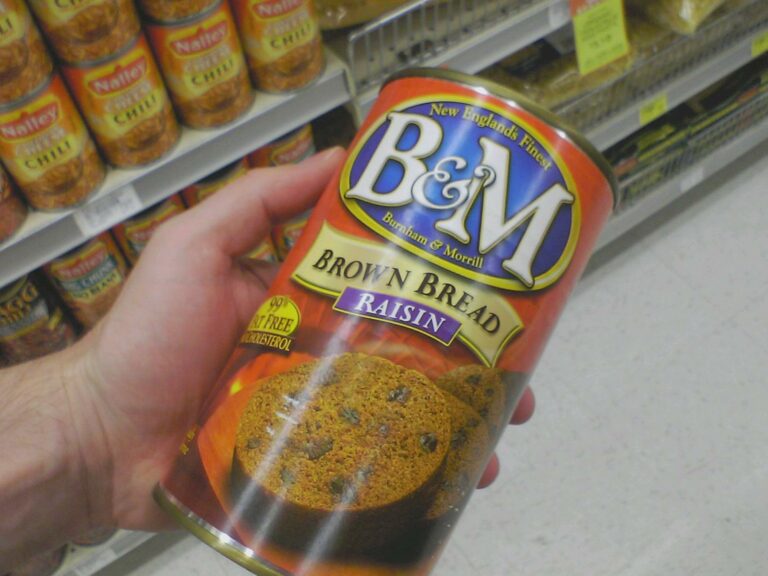Japanese Food: 42 Traditional Dishes of Japan
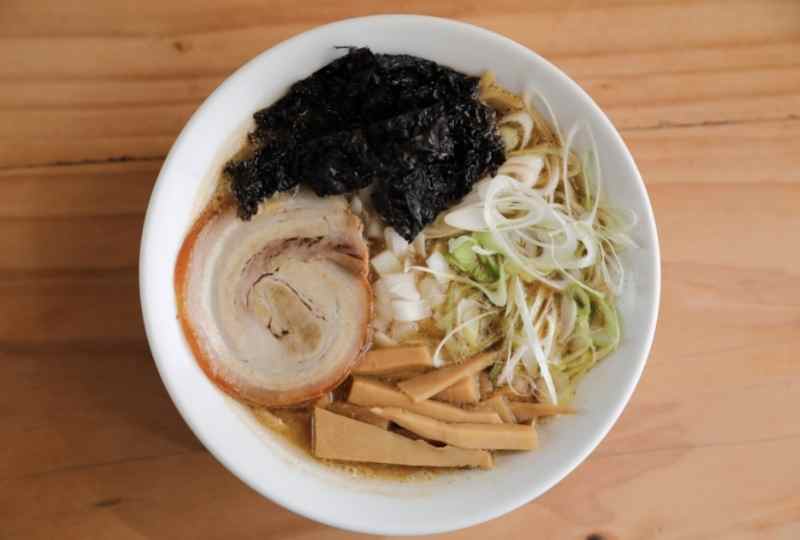
Japanese cuisine is famous around the world for its taste, variety of seasonal dishes and its wide range of health benefits.
A typical Japanese meal is based on a combination of staple foods, which generally include rice, noodles and soup/hot pots. In fact, an average Japanese meal consists of six times more rice per person than an average American meal!
Dishes like sushi and ramen represent Japanese cuisine in many parts of the world. However, many local dishes that are still exclusive to Japan are yet to make their way in the rest of the world.
Sushi

Sushi is quite possibly Japan’s most famous foodie export and a dish you will likely be very familiar with. Sushi come in all shapes and sizes but at its main ingredient is vinegared rice which is tightly packed and paired with a very wide variety of ingredients.
Raw fish is one of the most well-known sushi ingredients as well as other seafoods such as tuna, crab meat, squid and salmon. There are also many vegetarian types of sushi.
It is typically eaten with chopsticks and dipped in soy sauce, wasabi or pickled ginger.
Sukiyaki
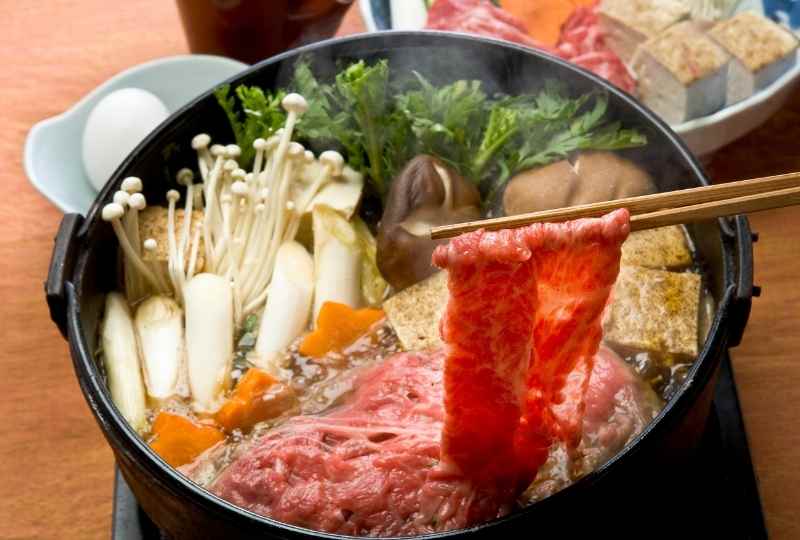
Sukiyaki is a type of Japanese hot pot which consists of thin slices of meat slowly cooked with vegetables and tofu. The vegetable side dishes vary depending on the taste and region, but some of the most common ones include spring onions, Japanese mushrooms such as shiitake, konjac root or noodles, and leafy vegetables such as Chinese cabbage.
The broth is usually made with soy sauce, sugar and mirin (a type of rice wine) and has a sweet, savoury taste. The ingredients are typically boiled in the broth and then dipped in beaten, raw egg yolks and eaten.
This dish also has regional variations and varies from family to family. In Osaka, for example, the meat is cooked first and all other ingredients – including the soup – are only added afterwards.
Tonkotsu Ramen
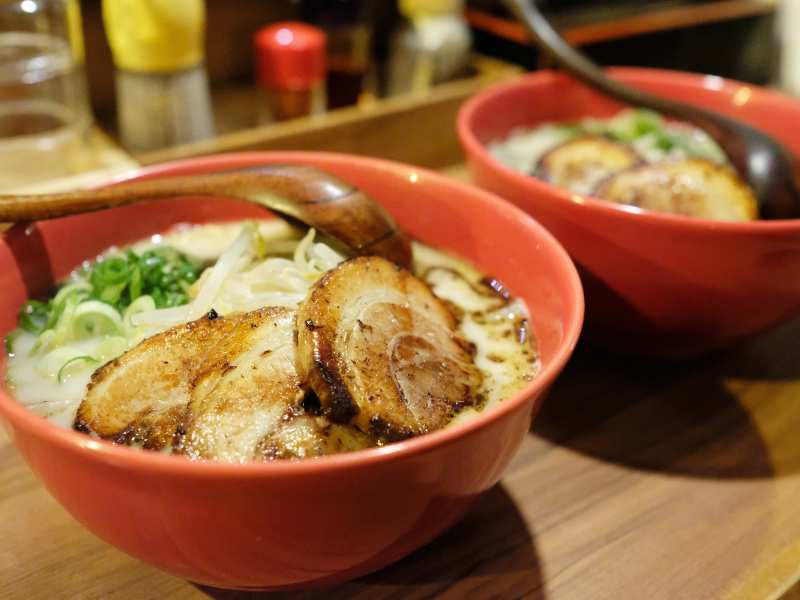
Tonkatsu Ramen is a ramen noodle dish made with noodles and a creamy broth made from pork bones and flavored with garlic, ginger, scallions and onions. Toppings such as a soft-boiled egg, sliced pork belly, and green onion are often added to accompany the noodles.
Shabu Shabu
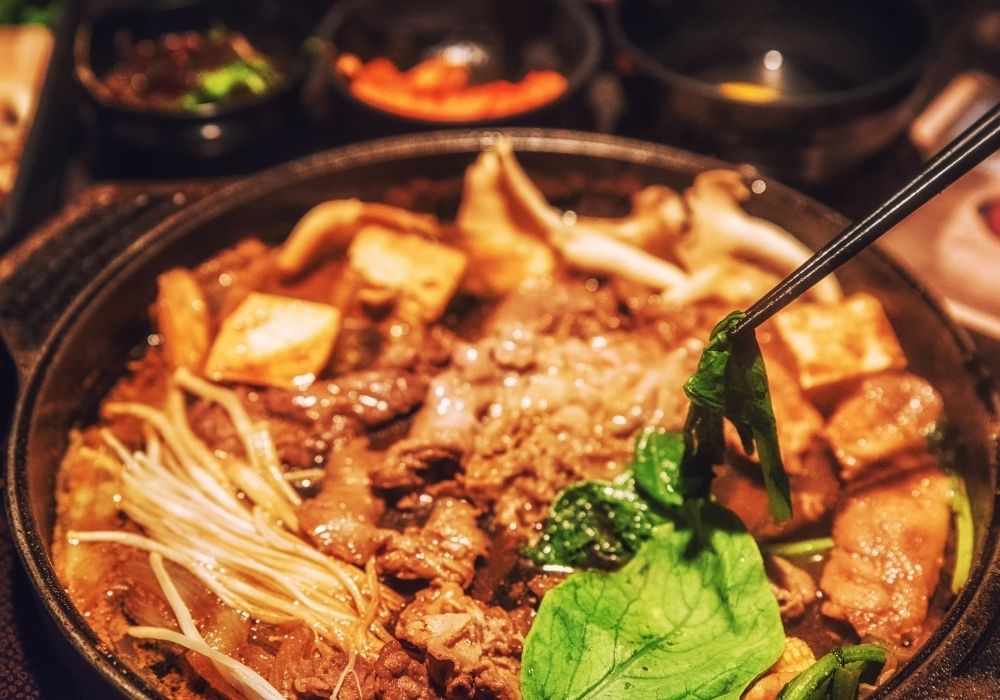
Shabu Shabu is a similar dish to Sukiyaki, but differs fundamentally in two ways: the soup base and the cooking method. A clear kombu broth is usually used for Shabu Shabu and the ingredients are dipped in ponzu (a soy sauce with a citrus flavour) or sesame seeds and then served.
The ingredients themselves are quite similar, although Shabu Shabu uses a wider variety of meat (chicken, beef) and seafood (lobster).
Chanko Nabe
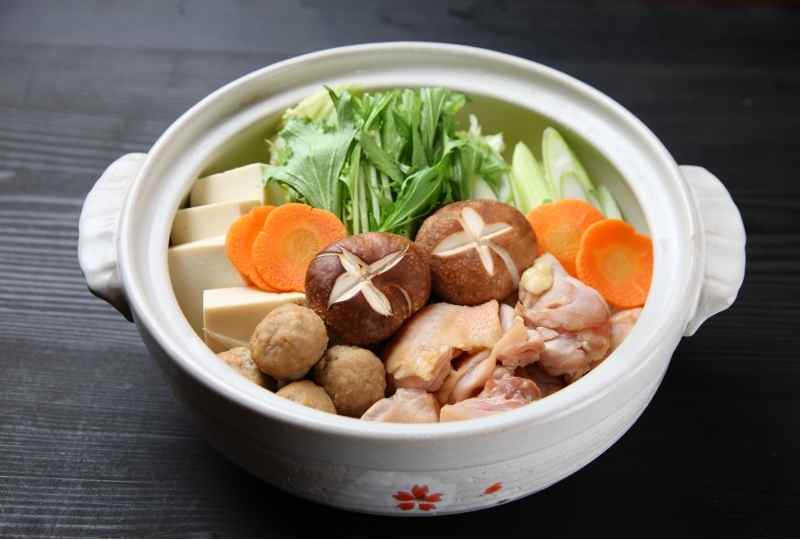
This hearty is a sumo wrestler favourite! If you haven’t already heard of this dish before, chanko nabe is high in protein and calories with different sumo stalls having their own set of recipes for this dish.
Typical ingredients are meat or fish balls, chicken, tofu, udon, soba and vegetables such as daikon, mushrooms or Chinese cabbage. The ingredients are simmered in dashi or chicken broth, which is seasoned with mirin or sake.
Onigiri
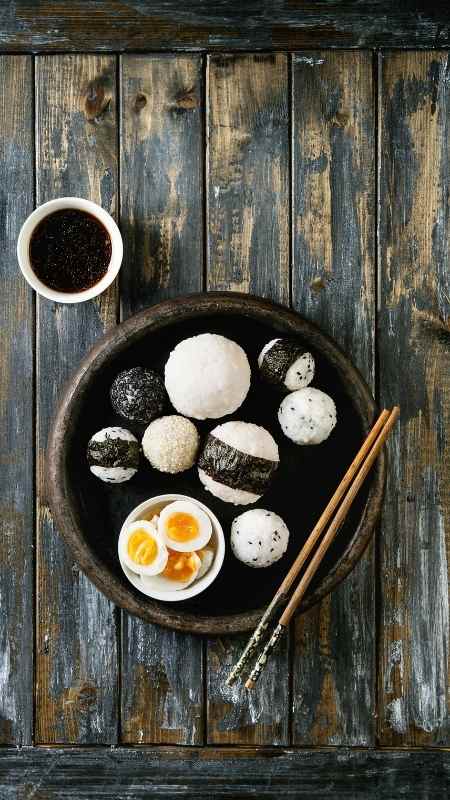
Onigiri are little rice balls wrapped in seaweed and stuffed with various different fillings. One of the most visually pleasing Japanese dishes, Onigiri are eaten as a wholesome quick snack.
Shiokara
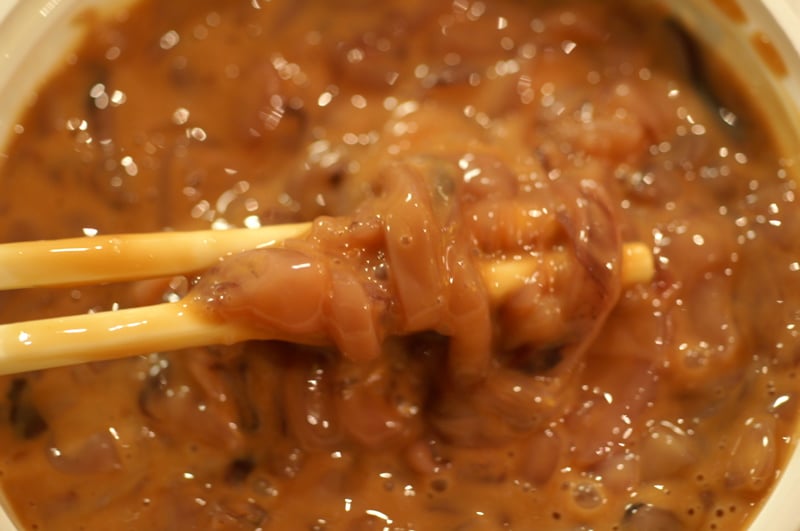
Shiokara refers to fermented offal from various sea creatures which are sprinkled with salt and seasoning. Anyone who has tried Shiokara remembers the salty, penetratingly spicy taste of the fish innards that digs deep into the palate and tongue and makes no move to disappear for hours.
That is why the Japanese have developed a strategy to truly “enjoy” Shiokara. The fermented intestines are swallowed as quickly as possible without chewing and their taste is then washed away with pure whiskey.
Katsudon
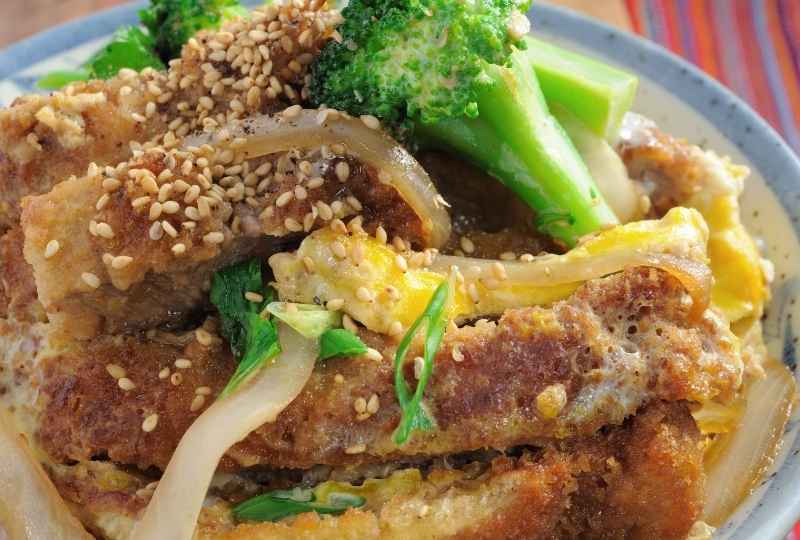
The name is a combination of katsu (breaded schnitzel) and oyakodon, which literally means “parent-child rice bowl.” This refers to the ingredients used in the preparation of Katsudon, namely chicken, egg and spring onions.
The ingredients are simmered in a sweet sauce made from soy sauce and served over rice.
Tsukemen

Unlike its famous cousin ramen, the noodles in Tsukemen and the soup are served separately. The ingredients for Tsukemen are dipped into the hot soup.
The dish was invented in 1961 by Yamagishi Kazuo, the late owner of a Ramen restaurant in Tokyo, and is now available nationwide and in some other parts of the world.
In today’s versions, soba and udon are often used as noodles and the soup is much more concentrated than regular ramen broths. This makes the taste much more intense.
Somen
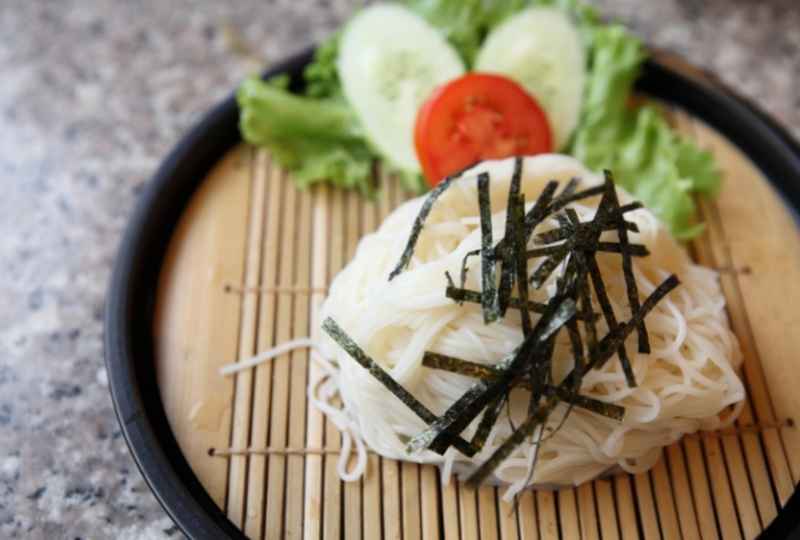
Somen are the ideal noodles for the hottest summer days. They are made from wheat flour and are very thin and white. Usually, they’re dipped in Tsuyu, a sauce made from soy with bonito flakes and vegetables such as ginger or spring onions.
They can be served hot in a soup, but are much more common as a cold summer dish. A truly refreshing way to survive the intense summer heat.
Daifuku
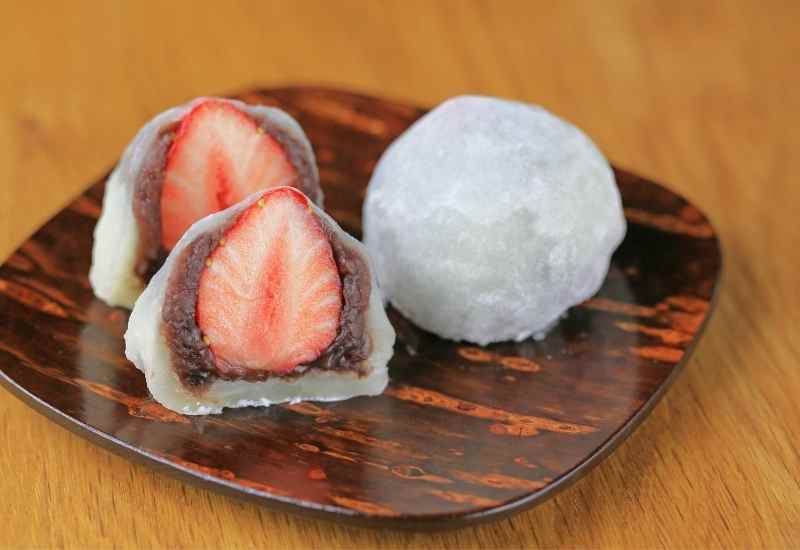
Daifuku, which literally translates to “great luck”, is a typical Japanese sweet. They consist of mochi and a filling, which is Anko in most cases. However, there is also Daifuku with green tea, mugwort, black sesame paste or fruit pulp filling.
Ichigo-Daifuku, a Daifuku with Anko and a fresh strawberry in the middle, were created in the 80s, which enjoy great popularity during the spring season.
Narutomaki
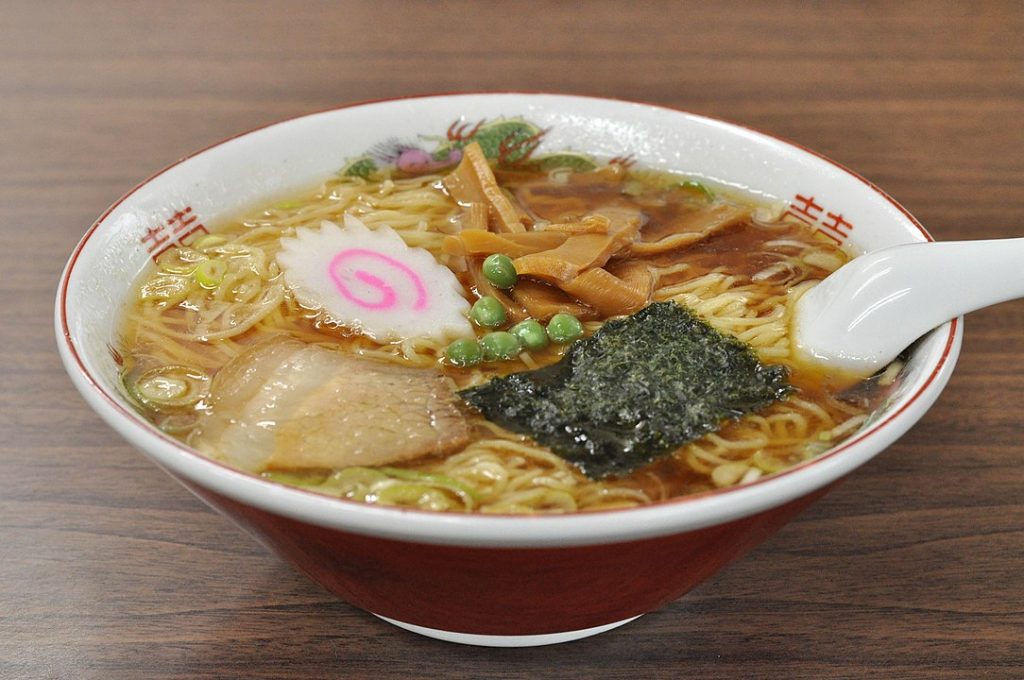
The world-famous Narutomaki is mainly used as a fish cake in ramen dishes. This is the reason why this dish also goes by the name of surimi fish cakes.
Narutomaki looks like a piece of white and pink flat cake, and it is usually placed on top of the pasta as a topping or garnish. This special fish cake is made from pureed white fish (surimi) and has a mild, subtle taste.
Hakata Ramen
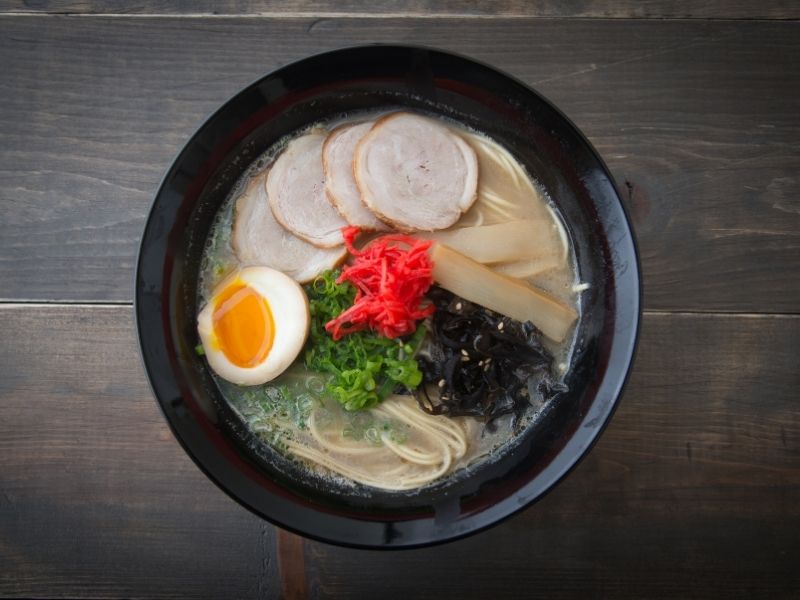
Hakata ramen is a dish which is a type of tonkotsu ramen (broth made of pork bones). The ingredients of hakata ramen can be vary greatly from place to place, but common ingredients include chashu pork, green onions, bean sprouts, mustard greens, pickled ginger, ramen eggs and sesame seeds. It is served with thin wheat noodles and seasoned with salt, soy sauce and miso.
Konpeitō
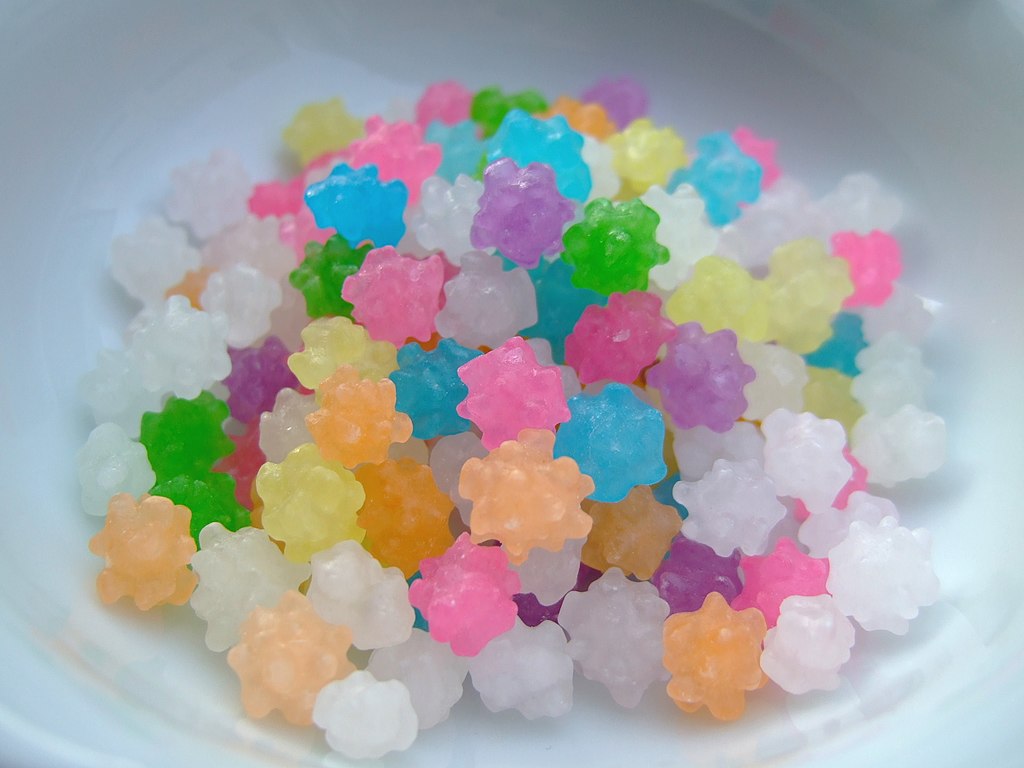
Konpeitō is a type of sugary Japanese candy that is a popular gift at weddings or celebrating the birth of a baby.
It is said that it takes 20 years to become a full-fledged Konpeitō craftsman as the process of hand-making the sweet is incredibly difficult. Proper preparation should result in colorful, horned balls of crystallized sugar that has been expertly crafted.
Aburaage
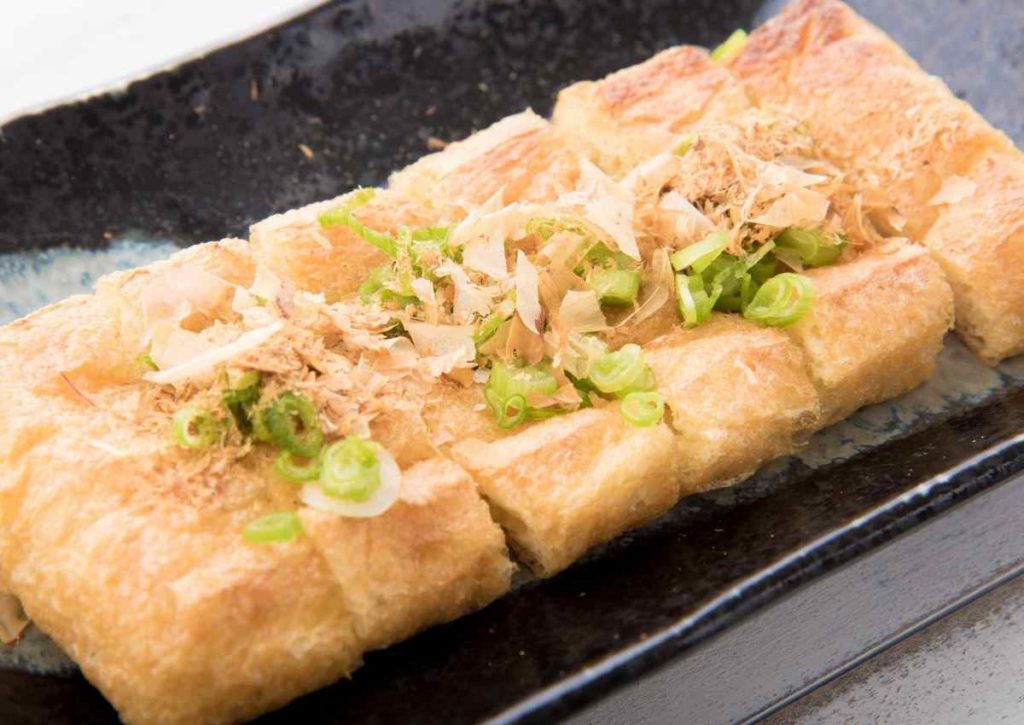
Aburaage is a type of thinly sliced, deep-fried tofu. It is popular since it is easy to pick up with chopsticks and it pairs well with other dishes such as mixed rice, soups and stews.
Yubari King Melon
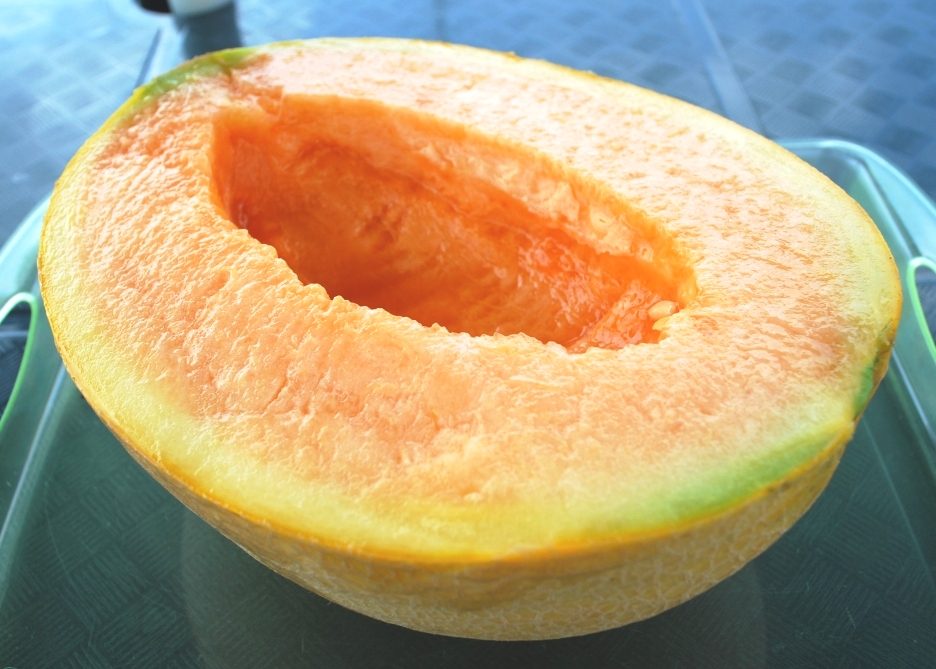
Yubari King Melons are known for being extremely expensive owing to the amount of time and attention to detail needed to grow them.
They are grown exclusively in Yubari on Hokkaido and are known for their sweetness.
Bukkake Udon
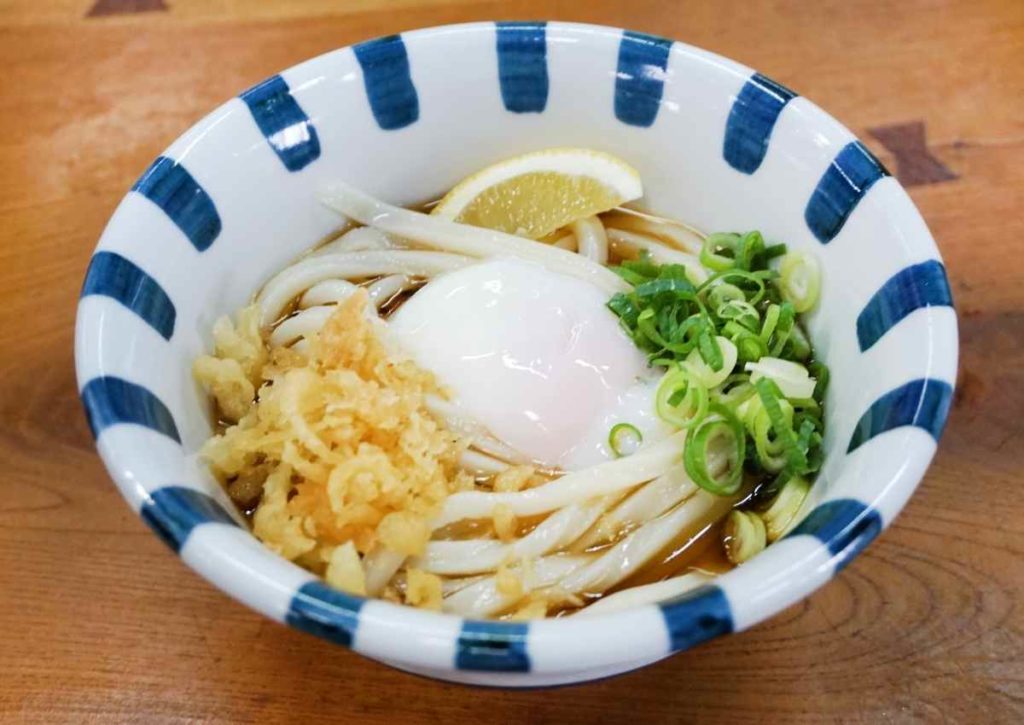
Bukkake Udon is a cold noodle dish consisting of udon noodles, ginger, vegetables, scallions, meat, poached egg and wasabi. Whilst Bukkake Udon is a filling and hearty dish, it is a fairly light meal, making it perfect for summer.
It is served in a broth and eaten as a refreshing summer dish.
Fugu Fish
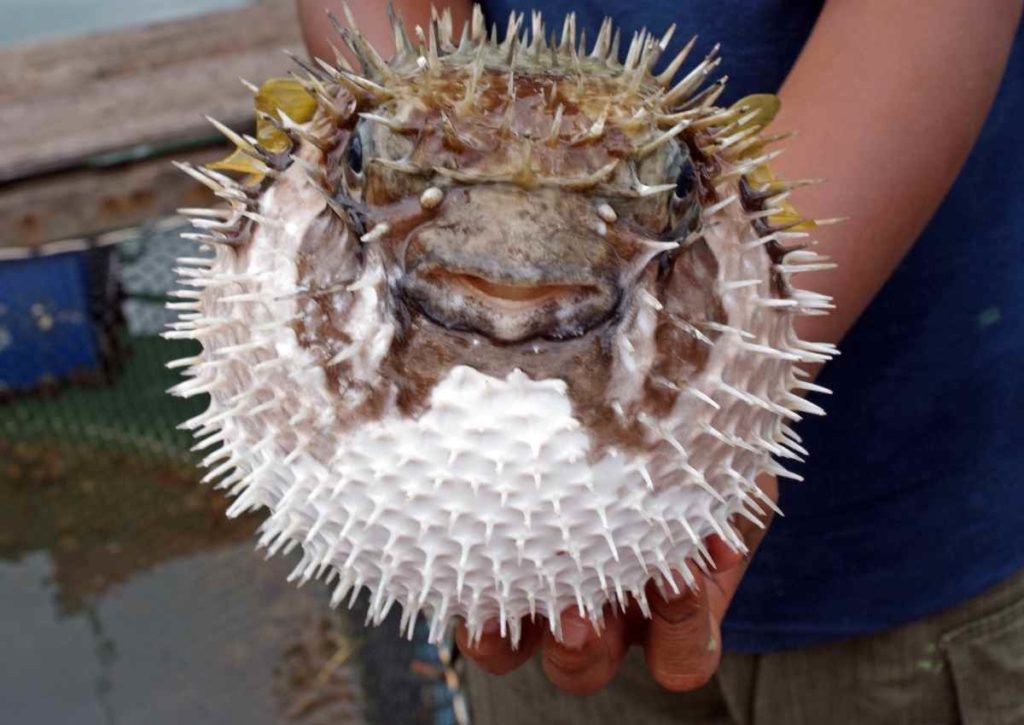
Fugu fish is a well-known lethal delicacy in Japan where incorrect preparation could lead to poisoning and death. Only specially trained chefs are allowed to prepare the dish as it is crucial to separate the poisonous organs from the meat before cooking and serving.
Takoyaki (Octopus Dumplings)
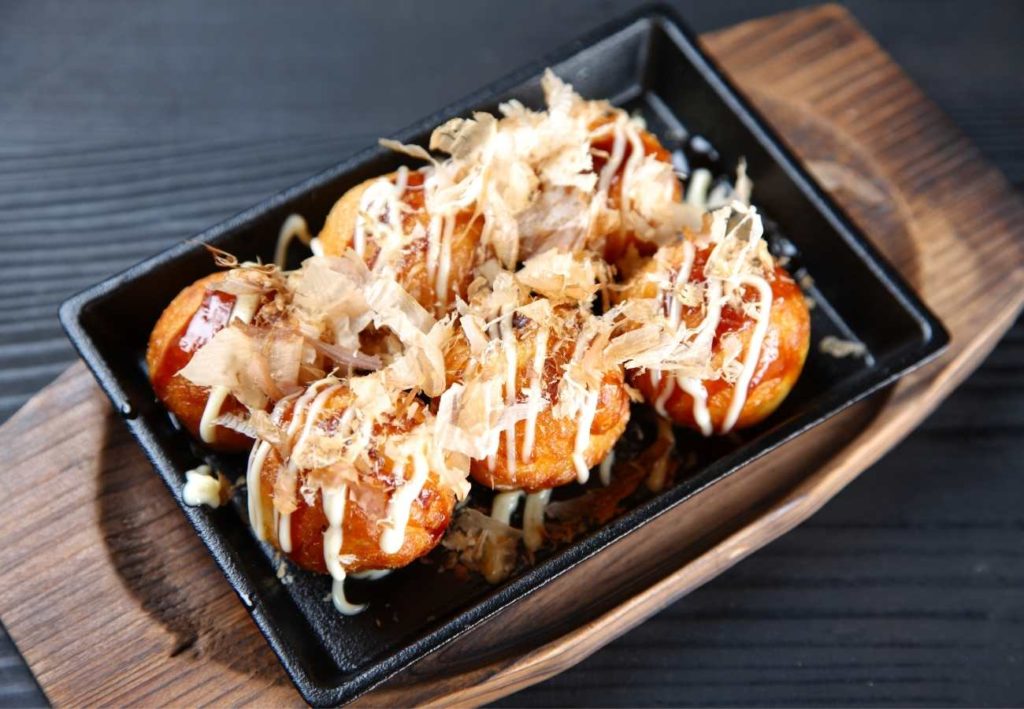
Takoyaki (or octopus balls) consists of minced octopus meat, tempura scraps, pickled ginger and green onion in a wheat flour-based batter. It is cooked in a molded pan in the shape of balls and topped with takoyaki sauce and mayonnaise.
Green laver and shavings of dried bonito are then spread on top.
Hanami Dango
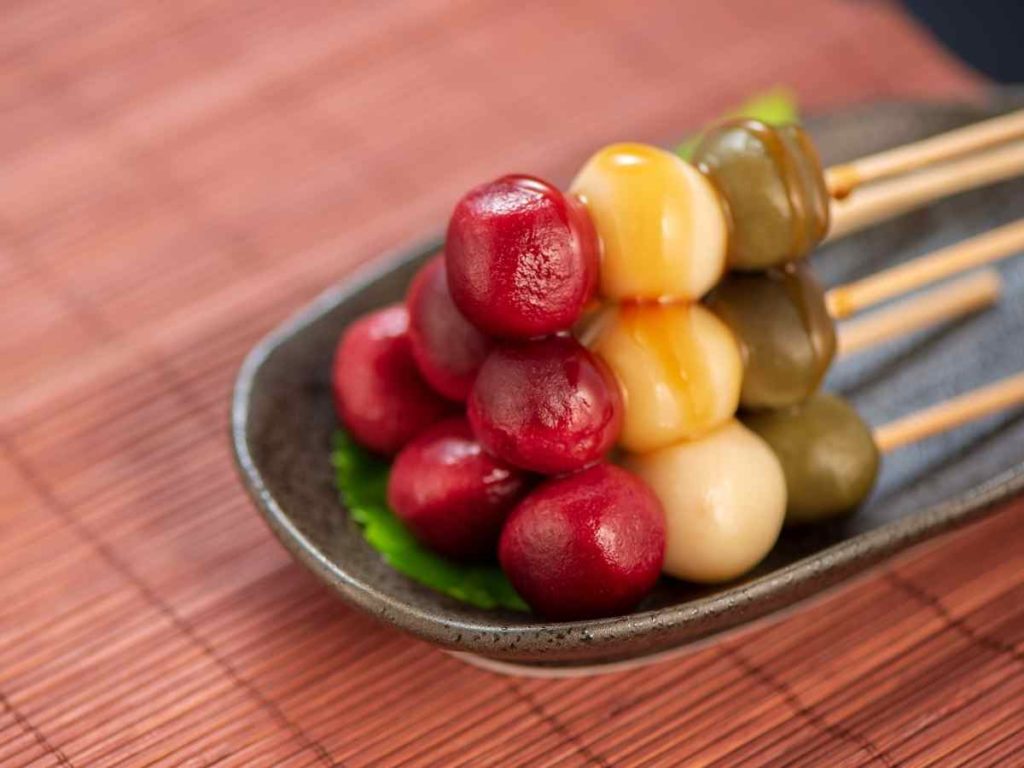
Hanami Dango is a sweet, rice flour dessert made by forming balls of different colors and skewering them on bamboo sticks.
It is mostly associated with festivals, particularly the yearly flower viewing (Hanami), when locals take to the parks to enjoy the blossoming trees.
Wasp Crackers (Jibachi Senbei)
Wasp crackers, also called Jibachi Senbei, are a snack similar to senbei rice crackers but filled with digger wasps. Other ingredients include water, eggs, sugar, salt, oil, sesame seeds and soy sauce.
Old wasp hunters set traps near the neighboring countryside to capture the wasps. They are then added to the boiling water and, once boiled, they are dried and combined with the rice cracker mixture. The blend is then stamped in a hot iron cracker cutter.
Okonomiyaki
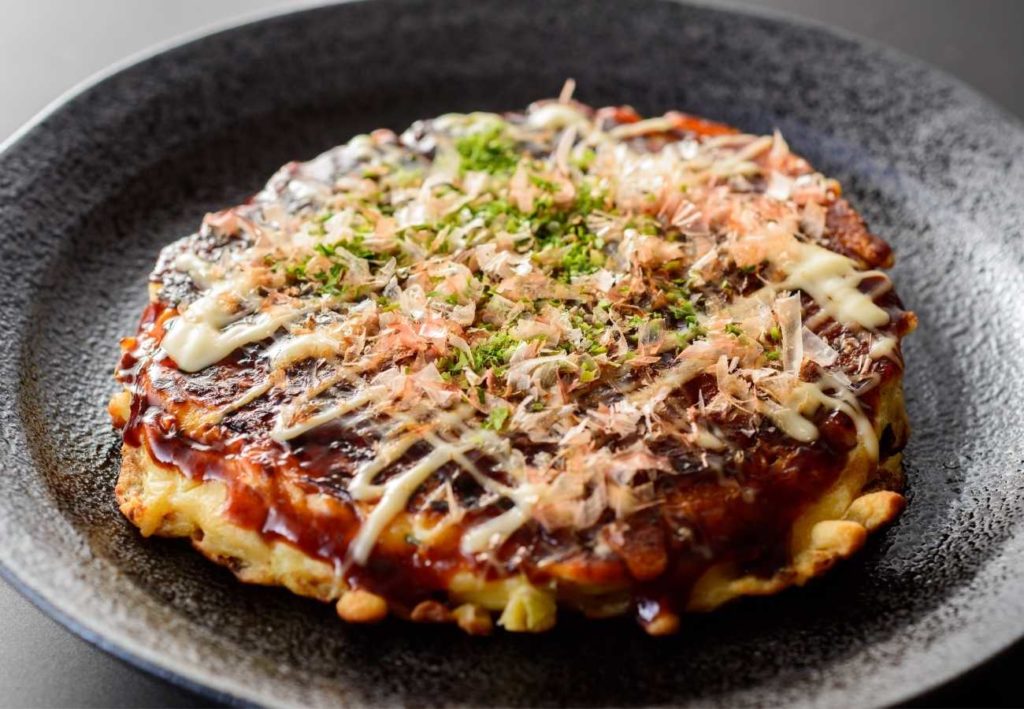
Okonomiyaki are Japanese-style pancakes or frittatas made from eggs, flour, cabbage, slices of pork belly and scallions. They can be topped with a wide variety of toppings, but they all include the signature Okonomiyaki Sauce which is sweet and tangy.
Takuan
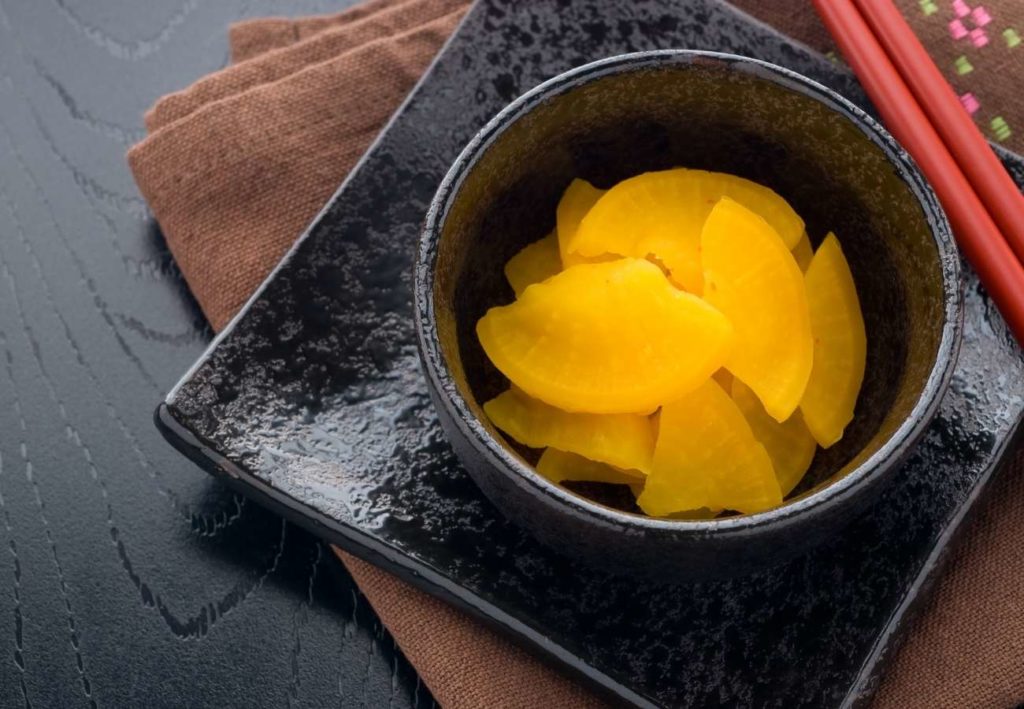
Takuan, also known as takuan-zuke, is a pickled yellow daikon radish that comes in thick strips and is frequently served along with other kinds of tsukemono (Japanese-style pickles) in typical Japanese cuisine.
Japanese daikon radish is generally sweet and mild in taste and has a good crunch to it. Hence, people often add the leftovers to stir-fries or salads. Takuan is also considered to be helpful with digestion. Hence, it is served in bento or after you’re done with your meal.
Castella
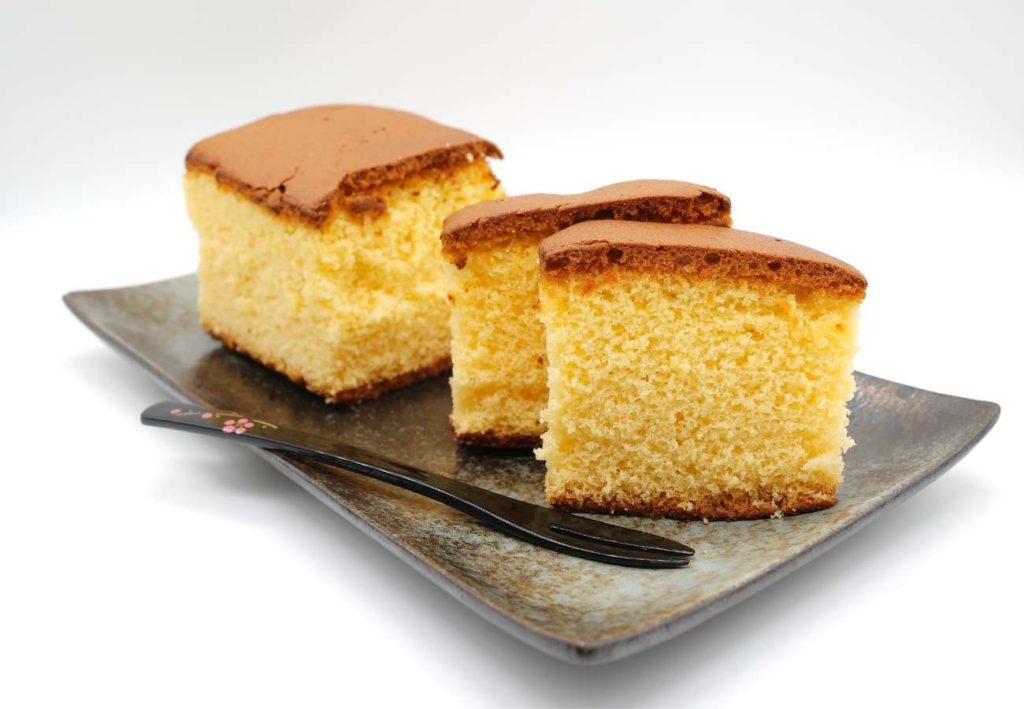
Castella or Kasutera is a traditional sponge cake prepared using bread flour, sugar, honey, and eggs. It is a type of wagashi (a traditional Japanese sweet meat) consisting of dark brown top and bottom crusts. The inside of this cake is a creamy yellow and its texture is very moist and bouncy.
There are many varieties of this Japanese delicacy, prepared using ingredients such as powdered green tea, brown sugar and honey, and they also come in various different shapes. It is typically accompanied with green tea or iced coffee.
Rakugan
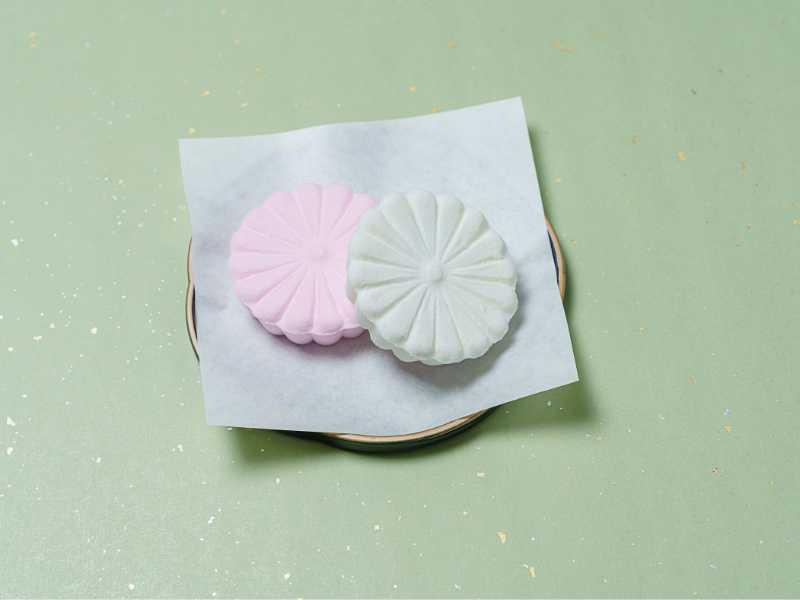
Rakugan are sweets that are known for their delicate and artistic appearance. They are made by kneading a mixture of finely ground sugar and glutinous rice flour with water, forming it into various shapes, and then drying it to achieve a hardened texture.
Dorayaki
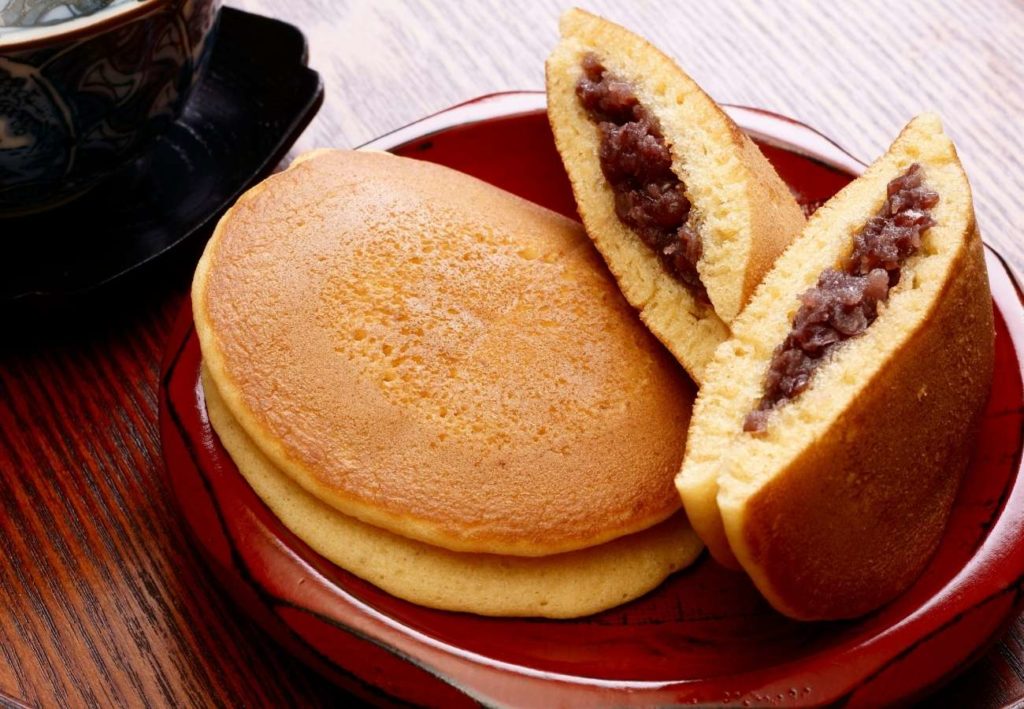
Dorayaki is a dessert comprising of two small pancake-like patties that are prepared by first making a castella cake. The castella cake is made into patty shapes which are then stuffed with sweet azuki bean paste. Many variations also use custard cream, chestnuts, and cream (matcha cream, cream with fruits, etc.) as the filling.
Sea Urchin (Uni)
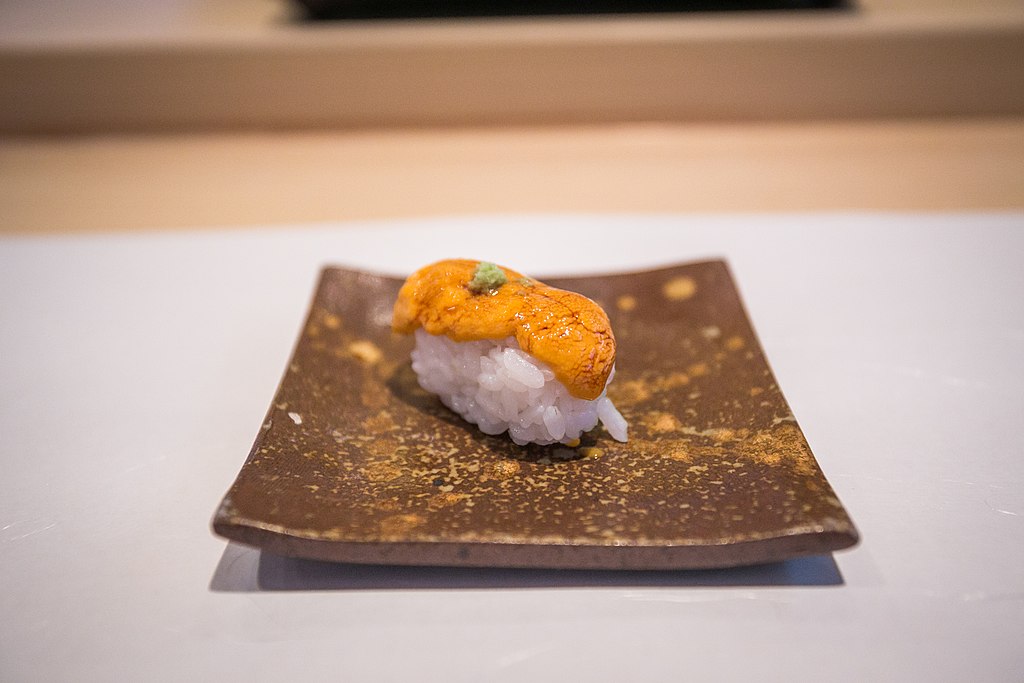
Sea urchins are spherical, hard-shelled animals generally found on the seabed of every ocean. They usually live in cracks and crevices on coastal rocks and reefs. In Japan, they are also known as uni, and are generally served raw as sashimi or in sushi, accompanied by soy sauce and wasabi.
Udon Soup
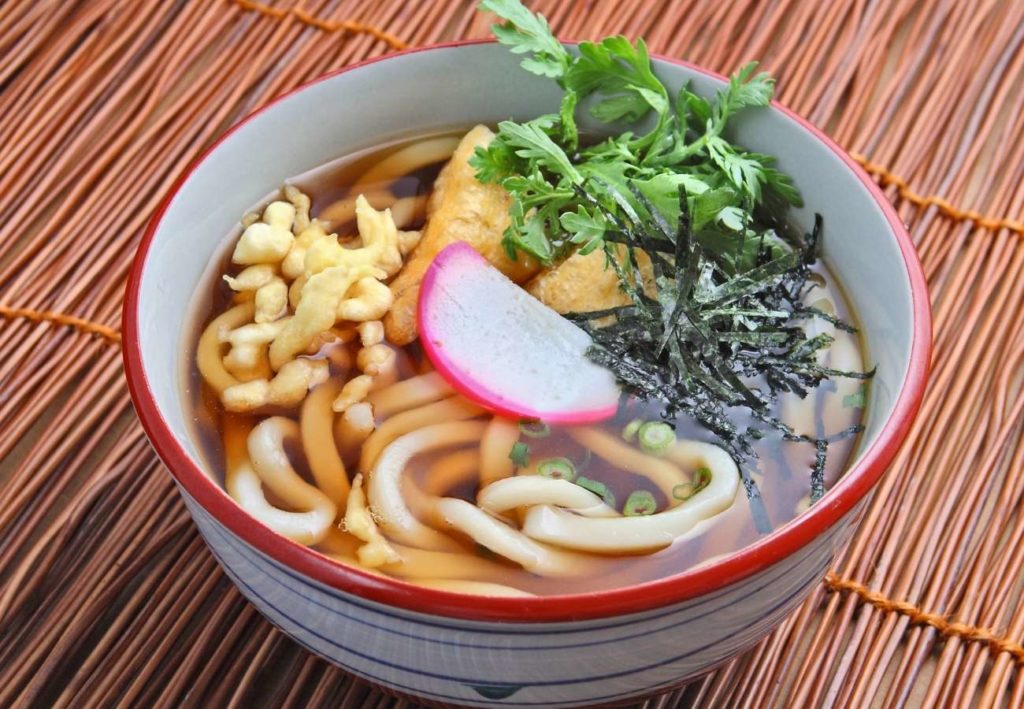
Udon is a traditional, thick Japanese noodle prepared using wheat flour. Udon can be prepared in many different ways and is considered a comfort dish for many locals. However, the simplest version is in a hot soup known as kake udon, along with a broth (commonly known as kakejiru). The broth is prepared using dashi, soy sauce, and mirin.
Tanuki Soba
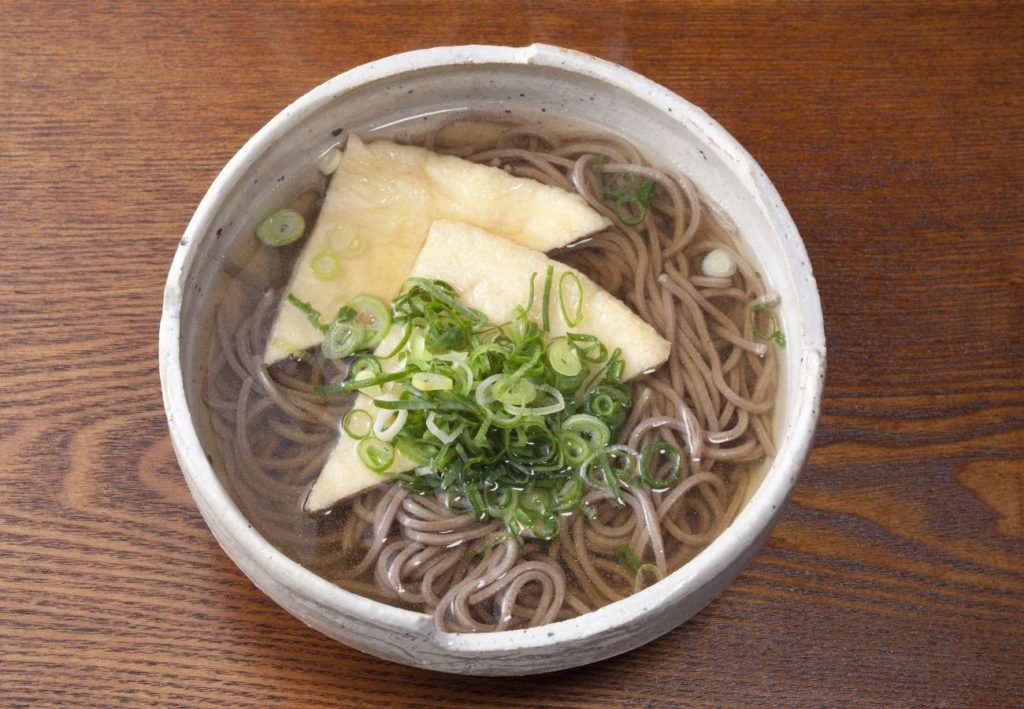
Tanuki soba is a traditional noodle dish prepared using buckwheat soba noodles. The dish is typically served in a dashi broth which is seasoned with soy sauce and then finished off with crumbled tempura batter.
The tempura helps to provide the dish with a crunchy texture. Usually consumed hot, this Tanuki Soba is sometimes also accompanied by seaweed strips and fish cakes.
Unadon
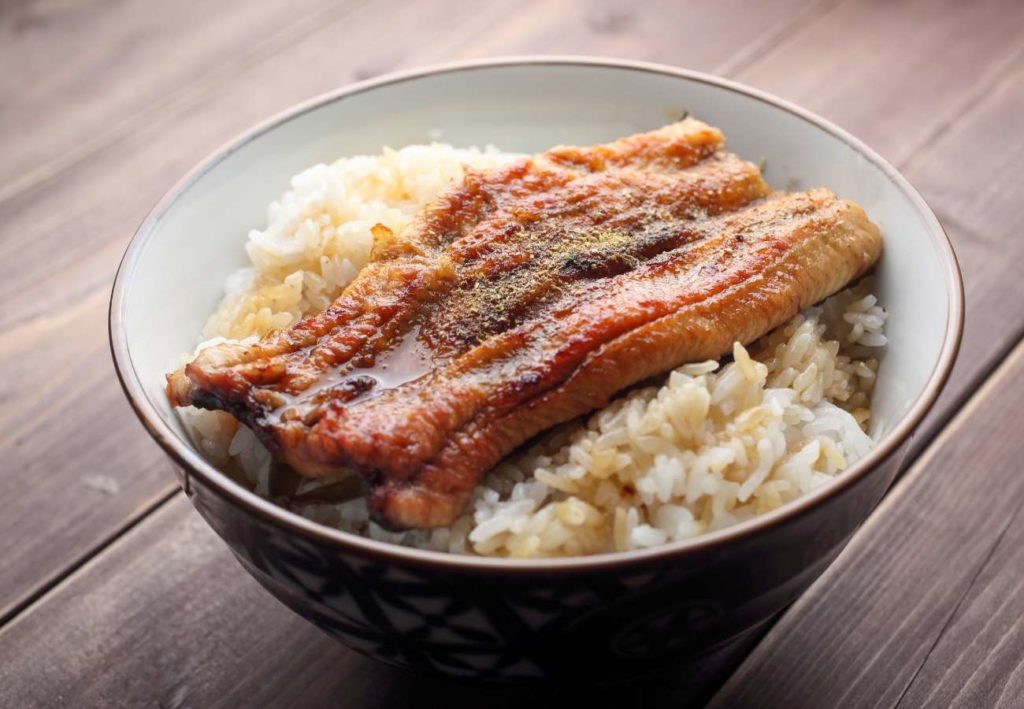
Unadon is a dish consisting of grilled unagi (eel) fillets placed over steamed rice. The unagi is made kabayaki-style, like teriyaki. The fillets are coated with a sweetened soy-based sauce (also known as tare) and caramelized, generally over a charcoal fire.
Traditionally, pulverized dried berries of sanshō (also known as Japanese pepper) are added on top as seasoning.
Shrimp Chips (Prawn Crackers)
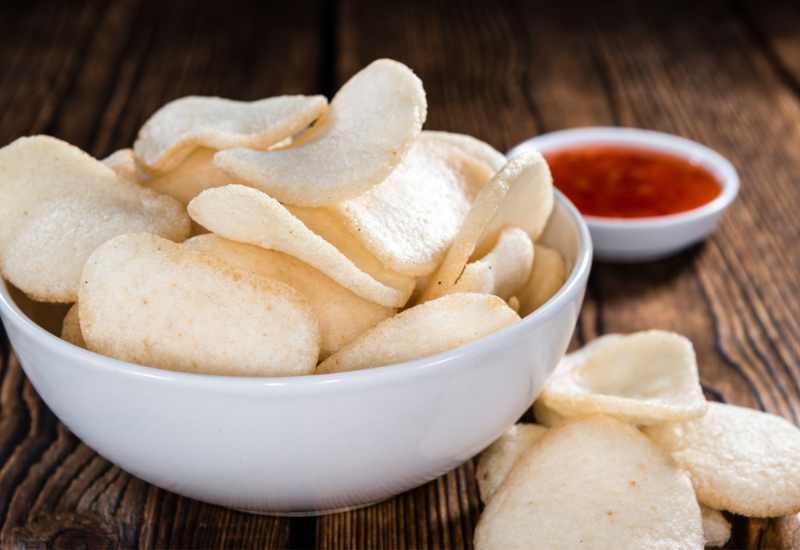
Shrimp chips are a popular snack or side dish in many Asian countries. They are typically made from a combination of shrimp paste, tapioca starch, and water, which is then shaped into thin, round chips and deep-fried until crispy.
The chips are usually served as a light and crunchy snack or appetizer and can be eaten on their own or with a dipping sauce.
Basashi
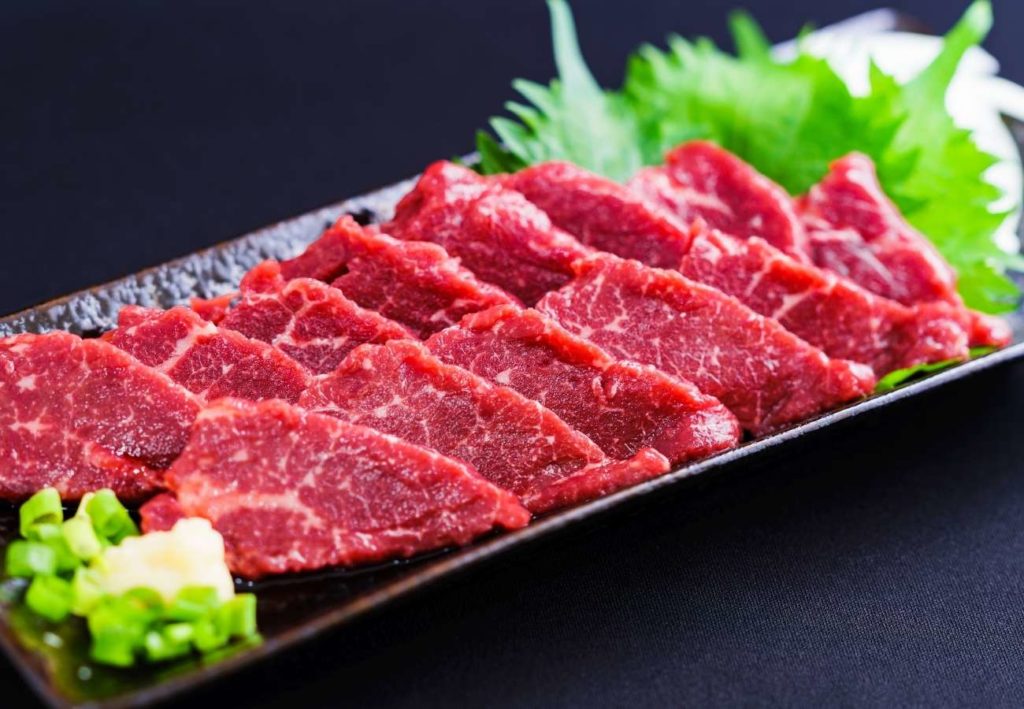
Basashi is a traditional horse meat sashimi dish. It is typically accompanied by condiments including sliced onions, grated ginger and garlic, and is then dipped in sweet soy sauce. It is usually consumed cold (almost frozen in the middle) and is considered to be a popular side dish for drinks.
Mentsuyu
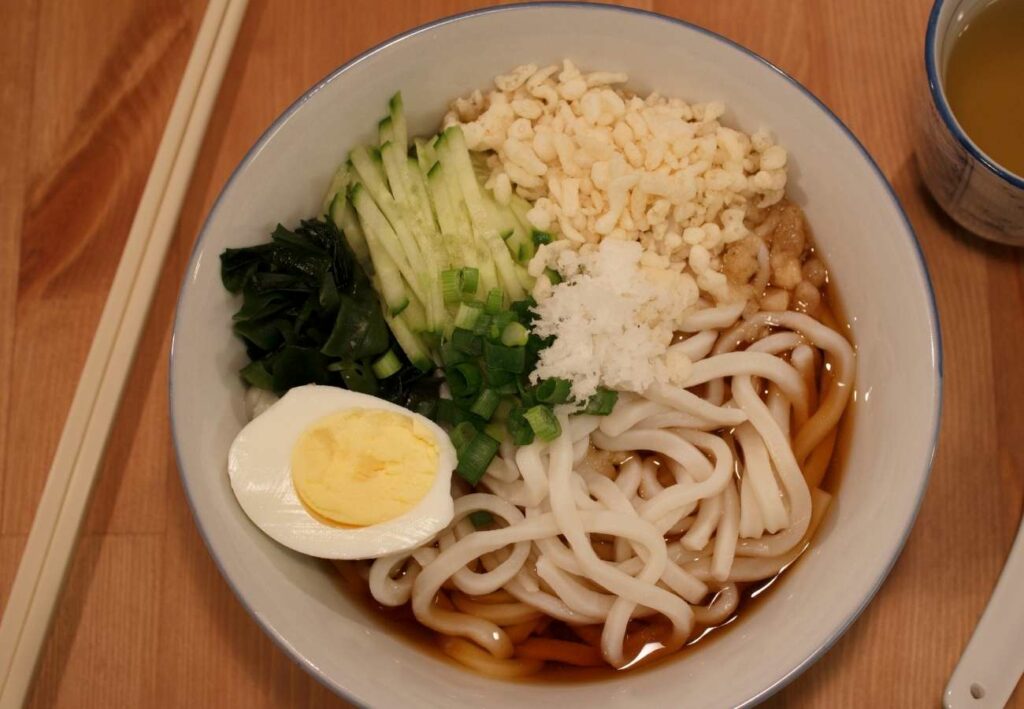
Mentsuyu, also known as Tsuyu, is a soup base typically prepared using sake, mirin, soy sauce, kombu and katsuobushi (dried bonito flakes). It is usually added to soba and udon noodle dishes, and its flavor is said to be subtle yet strongly savory. Because of the addition of soy sauce and bonito flakes, this sauce is also said to have a slightly meaty, umami flavour.
Tuna Eyeballs
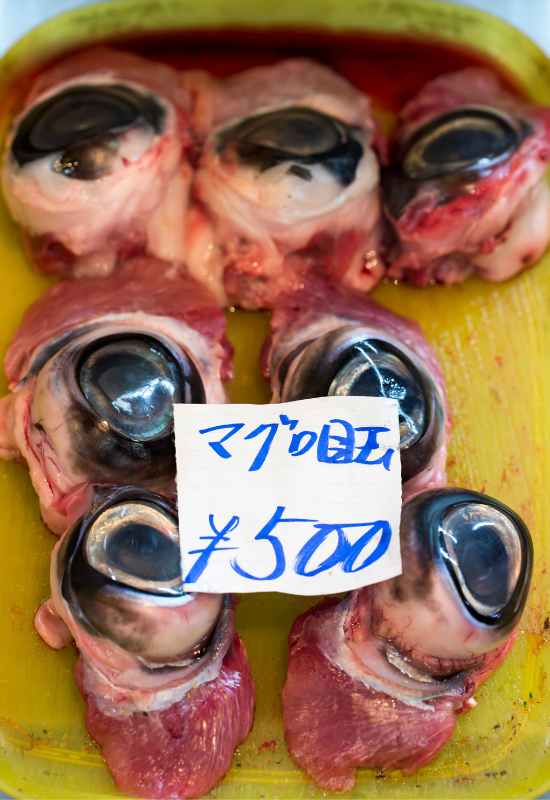
Tuna eyeballs are a delicacy in some parts of the world, particularly in Japan where is it known as Maguro No Medama Yaki, which translates to ‘grilled tuna eyeballs’. They are prepared by boiling or simmering the eyeballs of fresh tuna and serving them as a side dish or snack. Some people also enjoy eating them raw.
Tamagoyaki
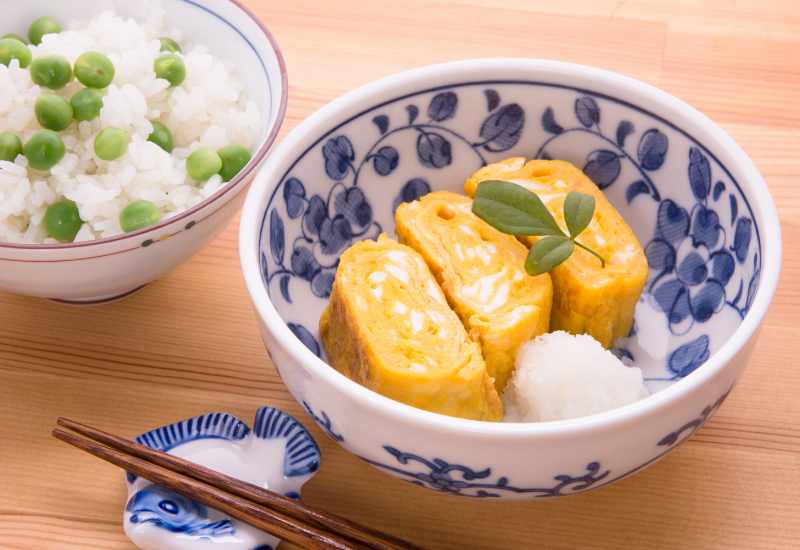
Tamagoyaki is similar to an omelet, but unique for the way that the egg is rolled over itself and seasoned with soy sauce, mirin and sugar. While tamagoyaki will sometimes use fillings such as seaweed, green onions, salmon, or tuna, it is just as often served plain.
Ikayaki (Grilled Squid)
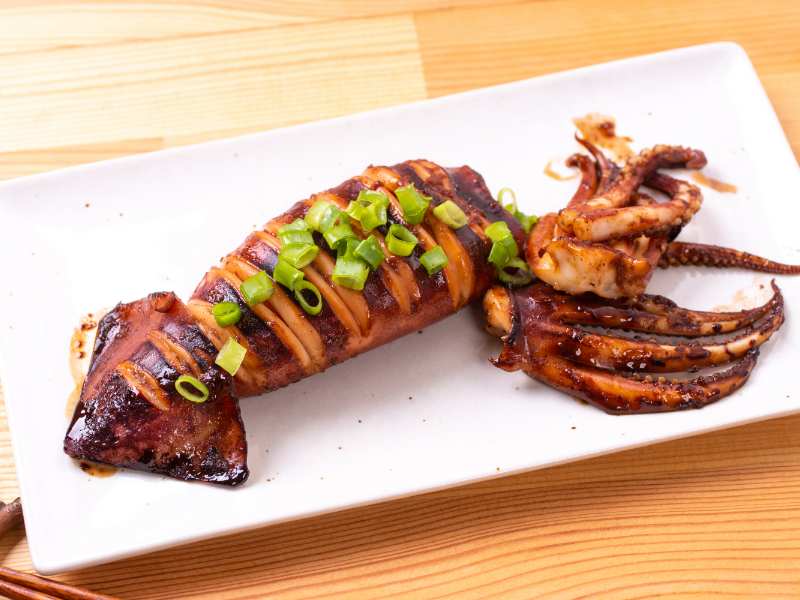
Ikayaki is a Japanese street food consisting of squid grilled in a soy sauce glaze and served on a stick or sliced on a plate. This food is an easily transportable snack and is popular in street food markets and at summer festivals all across Japan.
Anmitsu
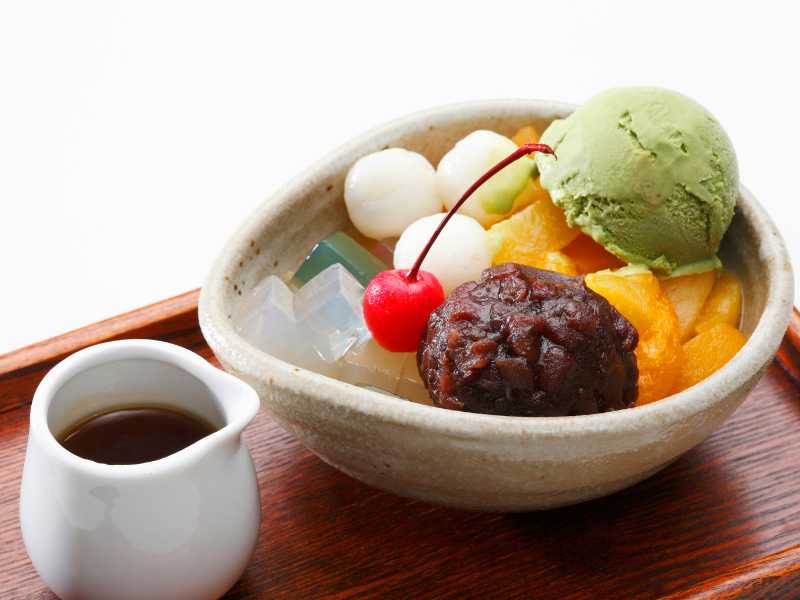
Anmitsu is a traditional dessert consisting of kanten jelly accompanied by fruit, mochi and anko topped with ice cream and kuromitsu. The jelly is prepared ahead of time, while the other ingredients are assembled just before serving. It is a popular summer dessert.
Temaki
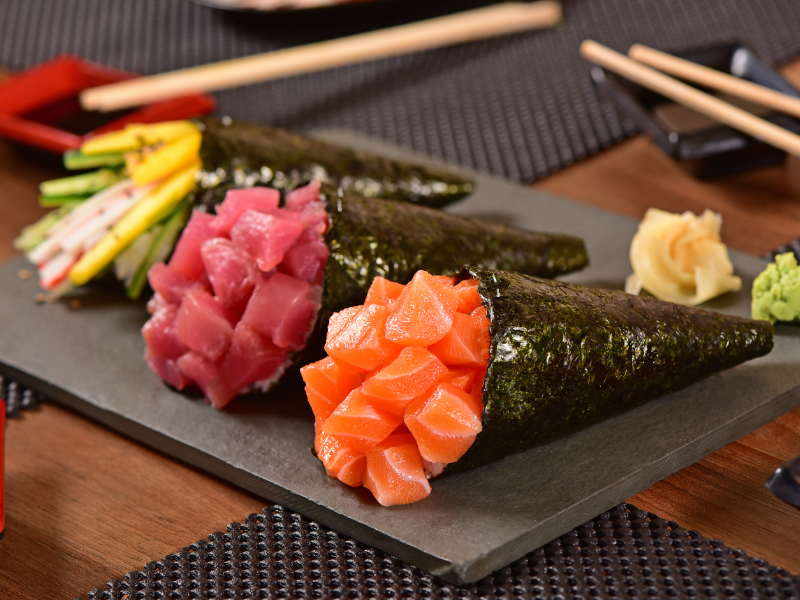
Temaki is a type of sushi consisting of a cone-shaped roll of nori (seaweed) which is filled with sushi rice, seafood, vegetables, and topped with condiments such as wasabi and pickled ginger. Typical fillings for Temaki include salmon, yellowtail , tuna, scallops, avocado, cucumber and pickles.
Okashi

Okashi are sweets that are made from a wide variety of ingredients including fruit, grain, nuts, and flour. They may be naturally or artificially flavored and come in a variety of shapes and sizes. They are produced by a number of methods including baked, fried, pressed and fermented.
Champon
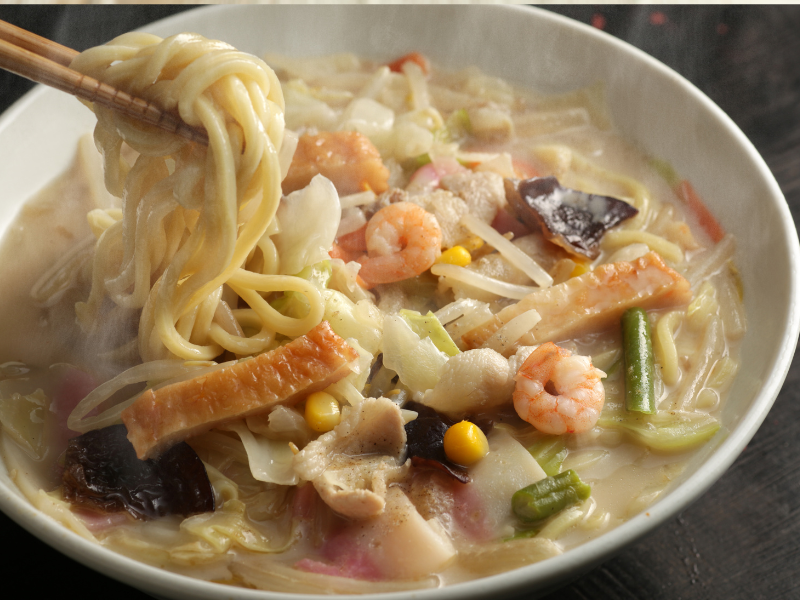
Champon is a noodle dish containing a meat broth, stir fried vegetables, seafood, and pork or beef with ramen noodles. The dish is considered to be the regional dish of Nagasaki, however it is enjoyed all over Asia, particularly in South Korea and China – where the dish originates.
Kakigōri

Kakigōri is the Japanese shaved ice dessert made using a machine called a Hatsuyuki, which translates directly as “first snow”. Different flavoured syrups, sweeteners and condensed milk are added depending on your preference and the end result is a stunningly simple and elegant Japanese dessert.
Monaka
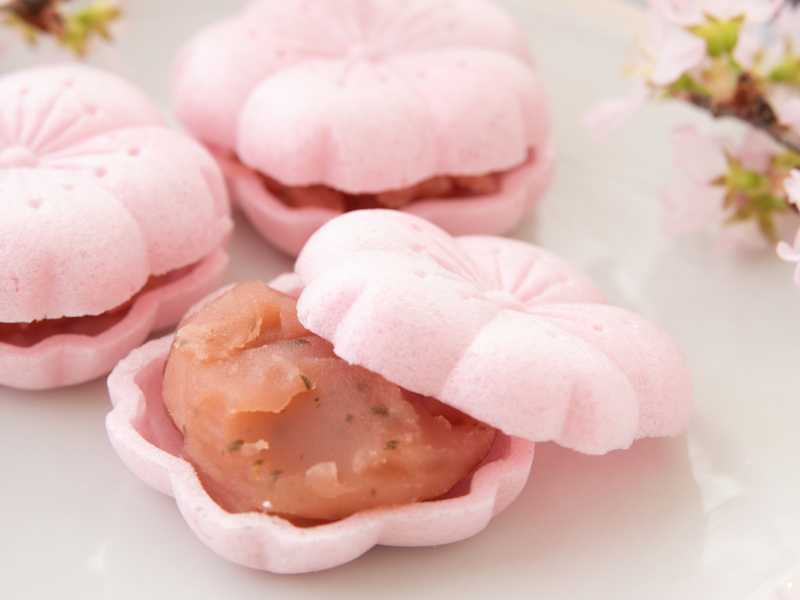
Monaka is a traditional confection which consists of a sweet sticky filling sandwiched between two rice-based wafers. Glutinous rice flour is mixed with water to form a dough which is rolled out thin. Shapes are cut out and the dough is baked.
Kamaage Udon
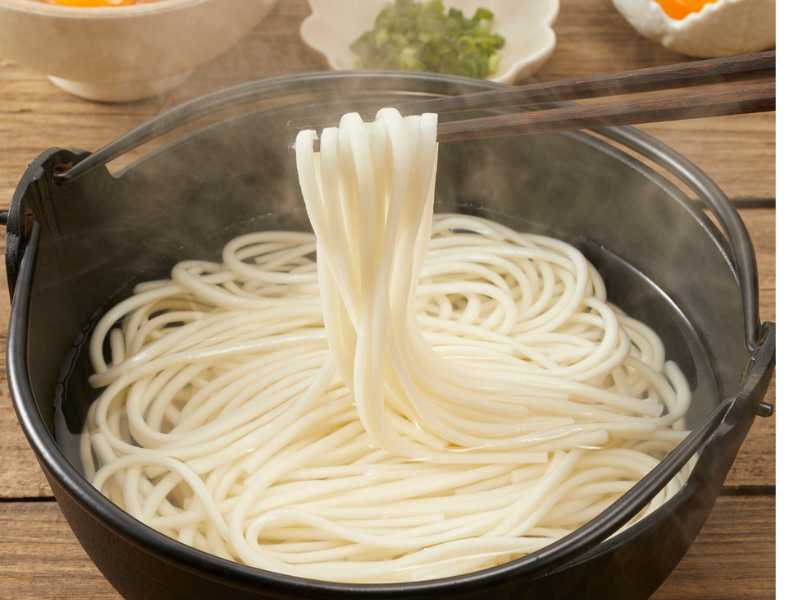
Kamaage udon is a dish consisting of plain udon noodles with a side of a soy based sauce. The sauce may contain other ingredients like green onions and sesame seeds. Variations are based around what is added to the sauce and based on personal tastes.

